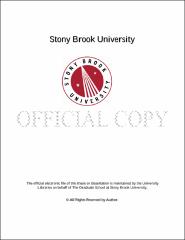| dcterms.abstract | With the growing need to find alternative clean energy sources to fossil fuels, research into developing efficient fuel cells and batteries stands at the forefront of this grand effort. However, before mass commercialization, fundamental key issues need to be addressed. For example, fuel cells are subject to high catalyst costs and poor durability of the underlying carbon support. As a way to alleviate these issues, we have synthesized ultrathin one-dimensional (1D) alloy nanowires to probe the effect of composition, purity, and one-dimensionality upon the observed overall activity, performance, and durability. In terms of chemical composition, crystalline ultrathin PtM alloy nanowires (NWs) (‘M’ = Fe, Co, Ru, Cu, and Au) were generated and subsequently evaluated for the hydrogen oxidation reaction (HOR). Additionally, ternary-based catalysts were synthesized (PtRuFe) in order to analyze how chemical composition influences CO tolerance as well as methanol oxidation reaction (MOR) and formic acid oxidation reaction (FAOR) activities. In both cases, we utilized a sustainably mild, ambient wet-synthesis method for the fabrication of chemically pure and crystalline systems in order to fabricate ultrathin, homogeneous alloy NWs. Moreover, in these studies, our NW systems exhibit favorable synergistic electronic effects with respect to controls. To address another fundamental issue associated with the durability of fuel cells, we have synthesized various metal oxide and perovskite materials of different sizes and chemical compositions as supports for Pt nanoparticles (NPs). Specifically, we have demonstrated favorable metal support interactions between the Pt NPs and the SrRuO3 NP supports, which lead to increased MOR activity as compared with not only the other metal oxide supports tested but also the commercial Pt NP/C standard. In terms of Li-ion batteries, LiFePO4 materials have become increasingly popular as a cathode material due to the many benefits they possess including thermal stability, durability, low cost, and long life span. However, to broaden the general appeal of this material for practical electrochemical applications, it was useful to develop a relatively mild, reasonably simple synthesis method of this cathode material. We describe a generalizable, 2-step methodology of sustainably synthesizing LiFePO4 by incorporating a template-based, ambient, surfactantless, seedless, U-tube protocol in order to generate size and morphologically tailored, crystalline, phase-pure nanowires. Specifically, we demonstrate for the first time experimentally that the Fe–O3 chemical bond plays an important role in determining the overall conductivity of the material, an assertion which is further supported by recent “first-principles†calculations. | |

